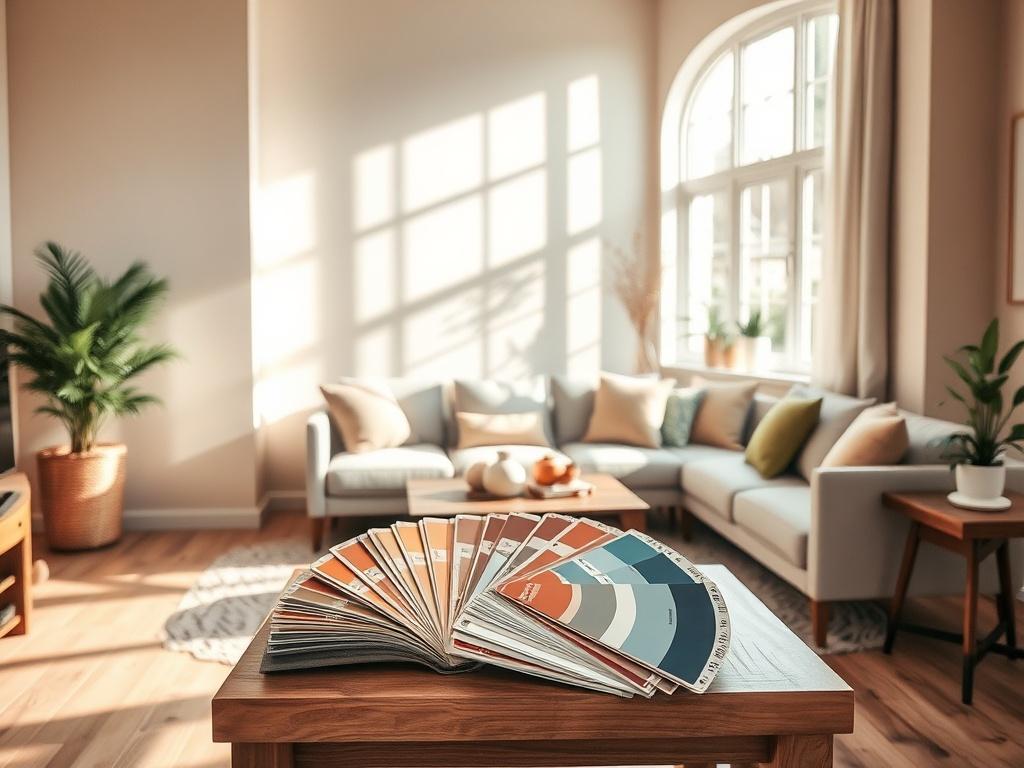
Choosing the right paint colors can transform a space, breathing new life into your home and reflecting your unique style. However, with countless options available, the process can feel overwhelming. In this blog post, we’ll help you discover how to select the perfect paint colors for your home by exploring essential color theory concepts, offering inspiring tips, and providing guidance on creating harmony throughout your living spaces.
Whether you're aiming for a tranquil sanctuary or a vibrant gathering place, understanding the fundamentals of color selection will empower you to make informed decisions. We'll guide you through innovative ideas and practical techniques to ensure that each room not only looks fantastic but also feels inviting and cohesive. Dive in with us to unlock the art of choosing paint colors that elevate both the aesthetic and ambiance of your home.
Discover the essentials of color theory for selecting the perfect paint colors
Understanding the fundamentals of color theory can significantly impact your ability to select the perfect paint colors for your home. Color theory revolves around the color wheel, which categorizes colors into primary, secondary, and tertiary shades. By recognizing how colors interact with one another, you can create a harmonious palette that enhances the overall feel of your space. Warm colors like reds and yellows tend to create an inviting atmosphere, while cool colors such as blues and greens can promote tranquility and relaxation. Familiarizing yourself with these relationships allows you to make informed decisions that resonate with your personal style and the mood you wish to convey.
In addition to understanding color interactions, it’s crucial to consider the psychological effects of different hues. For instance, studies have shown that soft blues and greens can lower stress levels, making them ideal choices for bedrooms or relaxation areas. Conversely, vibrant reds or oranges can energize a space, making them suitable for workout rooms or play areas. By keeping these psychological aspects in mind, you can ensure that your chosen paint colors do more than just look appealing — they will also create an environment that nurtures well-being and comfort. Remember, selecting paint colors is not merely about aesthetics; it’s about curating an atmosphere that enhances your daily life.
Unlocking inspiration: Tips for choosing paint colors that complement your home
Choosing the perfect paint colors for your home can feel overwhelming, but drawing inspiration from your surroundings can simplify the process. Start by evaluating the existing elements in your space, such as furniture, artwork, and fabrics. Look for colors that are already present and harmonize with those tones. For example, if you have a beautiful piece of artwork that features shades of blue and green, consider using those colors as a foundation for your palette. Additionally, explore natural elements outside your home, like the sky, trees, and flowers. Incorporating hues inspired by nature can help create a cohesive and inviting atmosphere.
Another effective method for selecting paint colors is to create a mood board. Gather swatches, fabric samples, and images that resonate with your vision for each room. This visual representation will help you see how different colors interact and how they can evoke the emotions you want to feel in your space. Don't shy away from experimenting with bolder colors, particularly in less traditional spaces like hallways or laundry rooms. Remember, the goal is to create an environment that reflects your unique style and personality. Embrace the creative process, and let your inspiration guide you in discovering the perfect paint colors for your home.
Creating harmony: How to select the perfect paint colors for every room
When creating harmony in your home, selecting paint colors for each room requires careful consideration of function and mood. Start by evaluating how you aim to use each space. For instance, soft blues and greens can promote relaxation in bedrooms, while brighter hues like yellows and oranges can energize kitchens and family rooms. Using color samples on your walls allows you to visualize how different shades interact with natural light throughout the day. Take your time to test varying tones, as they can appear differently depending on the time of day and the lighting in the room.
Additionally, think about how each room connects with those that share walls or are adjacent to it. You want to create a cohesive flow throughout your home without leading to jarring contrasts. Consider using a limited color palette across spaces to maintain unity while allowing for some variations in saturation and depth. For example, if you choose a warm gray for the living room, opt for a muted taupe or soft beige in the adjoining dining room. This approach fosters a sense of continuity while still allowing for individuality in each room's atmosphere. Make sure to incorporate any existing furniture or decor into your choices, ensuring that your selected paints truly enhance the overall aesthetic of your home.